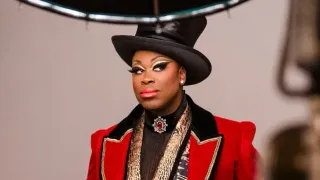Apr 7
She Found a New Way to Be Loud and Wrong–And Ace Folks Are Over It
Kilian Melloy READ TIME: 2 MIN.
After years of attacking the trans community, "Harry Potter" author J.K. Rowling is now going after asexual people.
Pink News reported that the author, 59, took to X (formerly Twitter) with a retweet of a graphic that explains asexuality. But rather than educate, she was seemingly there to deprecate.
"Happy International Fake Oppression Day to everyone who wants complete strangers to know they don't fancy a shag," the fantasy author sniped.
The tweet drew hoards of complaints against asexual people as well as gripes about days that recognize different sexualities in general.
"This is the problem with lumping everyone who isn't straight into a 'LGBTQ etc' category," one person commented. "If asexual people don't want sex, good luck to them. But gay people quite like it, actually.😅"
Queried another: "As a gay man can someone tell me why straight people not wanting to get laid has ANYTHING TO DO WITH ME?!"
A third declared, "I'd quite like to see an International day of nothing Day. A day where absolutely nothing at all is rammed down our throats."
"Everything has its own day now," someone else said; "what will be next?"
To that, Rowling responded: "I want an International Bored Of This Shit day."
In another comment, Pink News noted, Rowling puzzled over the question, "how do asexual people know whether they're gay or straight, I wonder?"
In response, the news outlet added, one person offered a clue:
"Rowling does not understand the concept of Romantic Love."
Rowling has been carrying on a row with the transgender community since June of 2020, when she posted remarks on X (formerly Twitter) that were widely seen as being transphobic. Rowling has gone on to label herself a TERF - "trans-exclusionary radical feminist."
Rowling's attacks have grown sharper and more personal since. Last year she posted a string of tweets in which she aimed critiques at cherry-picked individuals she said claimed to be transgender but were sexual predators. The author declared in those posts that trans women are "men performing their idea of femaleness, however misogynistically or opportunistically..."
In the same series of tweets, Rowling also targeted leading trans women of note, including UK delegate to the UN Katie Neeves, rape crisis center leader Mridul Wadhwa, and model Munrow Bergdorf, as well as TV personality India Willoughby. In another post, Rowling misgendered Willoughby and called her a "male narcissist."






